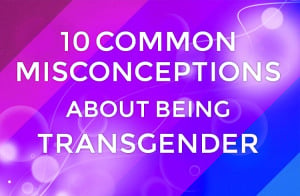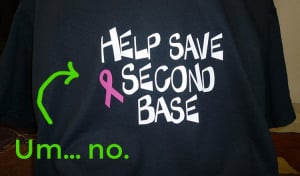
Three people, all increasing in age, gaze thoughtfully into the camera.
I love my brown skin. I love the way it glows during the summer, the way it becomes deeper, more expressive.
But sometimes, during those late days of August, after an entire season of basking outside in the sun, I’ll catch myself in the mirror. I’ll be surprised by the version of myself that has appeared several makeup shades darker than normal, and I’ll suddenly start hearing my parents’ voices nagging in my head: “Ay, why are you too dark?!”
Stay out of the sun. Don’t go outside so much. These are the parently reminders I’ve heard from my mom and dad all my life.
Their mission is to protect me from dark skin, as if it were something dreadful and to be avoided, like tooth decay or failing grades.
When I was a kid, I didn’t really think about why my parents, along with my Filipino relatives, were so bothered by the tanned summer complexions of me and my cousins. It was just a given for some reason. Dark equals bad.
It wasn’t until college that I learned how this habit of affectionate skin-shaming actually evolved from the colonial history of the Philippines.
The Philippines was colonized by the Spanish for over 300 years – up until the end of the Spanish –American War in 1898. Spain lost, and so they had to hand over the Philippine islands to the United States, who then took their place as overseers for the next fifty years.
Throughout these centuries of colonial domination, the Spaniards and Americans made sure to drill one singular message into the psyches of the Filipino people: White Rules. Literally.
They were seen as savages that needed to be controlled and civilized, and so Filipinos were forced to adopt the beliefs and values of their colonizers at the expense of their own dignity. The feelings of inferiority that Filipinos developed from comparing themselves to the dominating white standards of their rulers is called “colonial mentality.”
Passed down from generation to generation, the colonial mentality has dug its way into the Filipino subconscious and influences the way we judge ourselves and others around us still to this day.
Here are some of the ways that the colonial mentality affects the everyday beliefs and experiences of Filipino Americans:
1. You Always Encounter Comments About the Darkness or Lightness of Your Skin
So let’s go a bit deeper into this skin color issue.
This belief that naturally tanned skin tones are ugly and undesirable is a reflection of “colorism” — a form of internalized racism within communities of color that privileges light-skinned individuals over those with darker skin.
In the Philippines, dark skin is associated with poverty and working outside in the fields, while light skin is associated with beauty and the wealthy privilege of staying indoors.
Maintaining light skin is one way Filipinos try to avoid looking like members of “the underclass.”
If you’ve ever watched The Filipino Channel (TFC), which broadcasts Filipino news, soap operas, and karaoke-filled variety hours to its 8 million viewers worldwide, it becomes strikingly obvious that almost everyone on screen is light-skinned.
Skin whitening products are “one of the top grossing products in the Philippines.” Stem cell therapy lotions, oral whitening formula capsules, and human placenta whitening vials are marketed with the promise of “flawless beauty and skin.”
Perhaps through the effects of distance and time, colorism doesn’t seem to be as stark for Filipino Americans. I personally don’t know anybody who uses skin whiteners. In the United States we deal with different systems of white supremacy and colorism, where ironically, white American culture has deemed sun-tanned skin to be enviable and turned it into a $5 billion industry.
But that doesn’t mean it’s no longer something to be dealt with. I still hear jokes about dark skin being tossed around during family get-togethers regularly. I worry about my young nieces and nephews’ absorbent ears, and what messages about their own skin and self-worth they’re soaking in.
The fact is, these jokes still serve the function of keeping our history of colonization, racism, and self-hatred alive and present.
So what can we do to be better? Let’s embrace our natural skin color and encourage others to do the same. Let’s stop calling ourselves “too dark” and educate others about how problematic skin color comments can be, even in the form of jokes.
2. You Were Not Taught the Filipino Language
I don’t know how to speak Tagalog, the national language of the Philippines, nor the regional dialects of my parents. And my level of understanding? That’s probably about the same as your average three-year-old in the Philippines.
But the thing is, my home is far from an English-only household. My parents speak Tagalog all the time. They watch The Filipino Channel, which is mostly in Tagalog, all the time. My aunts, uncles, and grandparents speak Tagalog all the time.
And me? I’ll either just sit there and pretend I know what’s going on, making sure to laugh when everyone else does, or I’ll interrupt every few minutes with a “What? What did you say?”
Unfortunately, I’m not alone. Most Filipino Americans I know weren’t encouraged to learn Tagalog by their parents either.
Typically, immigrant parents want their children to assimilate easily into American culture, and because their native languages will never nearly be as valuable as English for surviving and thriving in the US, they often get left behind.
But this disconnect from our parents’ native languages is far more common among Filipino Americans than many other Asian or Latino American groups. Again, this goes back to the Philippines’ colonial history.
When the US ruled over the islands, English became the official language of the Philippines, as well as a sign of higher social status. Today, English remains the medium of instruction in most Filipino schools and because many Filipinos who migrate to the United States are already comfortable speaking English, Tagalog isn’t as necessary for their day-to-day communication.
And so for their American-born children, Tagalog easily slips away as something unimportant and inconvenient.
The problem is that for first and second-generation immigrants, speaking the language of their family’s country of origin plays a crucial role in maintaining their cultural heritage, sense of self, and familial connection.
Some psychological studies even suggest that Filipino Americans who are more highly assimilated, and therefore do not know Tagalog, may have lower rates of self-esteem and higher rates of depression.
But it’s never too late to learn! If you don’t know a Filipino language, find a book you can learn from or ask your fluent friends and family members to teach you.
3. You’re Told That White Partners Are More Desirable
There’s an entire side of Filipina women in my family who are only settling down with white men.
This preference for white men among Filipina American women reflects a form of internalized racism dating back to the age of the “Filipina war bride” phenomenon during US military occupation of the Philippines.
But don’t get me wrong, I’m not accusing Filipino Americans who marry or date white partners of being racists. The white men that my great aunts, aunts, and cousins have chosen to spend their lives with are great people and they’re genuinely in love with one another. And hey, I’m all for loving whoever you want in whatever way you want, as long as everybody is being respected.
The problem lies in the culture-wide preference for white partners over members of one’s own cultural group or even other people of color. The problem lies in the message: marrying white is marrying up.
Yes, we all have “types” of people that we’re interested in, but if they exclusively fall into categories of race then you might want to reflect on your preferences and where they might come from. If you are a person of color and your partner is white, try discussing with your partner how interracial dynamics might play out in your relationship. Read up on “decolonial love” and resisting oppression in interracial relationships.
4. You Are an ‘Invisible Minority’
Asian Americans as a pan-ethnic group are already largely underrepresented in the media and political spaces. But guess what? Filipino Americans are usually forgotten about even among Asian Americans groups. And it’s not because there’s not enough of us — Filipino Americans rank as the second largest Asian group in the United States, with over 3 million people strong.
That’s why Filipino Americans are known as the “Invisible Minority.”
Take this recent New York Times video called “A Conversation with Asian-Americans on Race,” for instance. There were twelve different interviewees who were asked to share their personal challenges and paint a complex picture of the Asian American experience. But not one of them was Filipino.
Most people know very little about Filipino American history, even though Filipinos have played an integral role in shaping the America we know today, and have been on this continent since 1597 (several decades before the Pilgrims even arrived). Despite the fact that Filipinos are stereotypically considered to be great musicians and dancers, few Filipino Americans have achieved celebrity status in the entertainment industry.
Again, Filipinos are used to blending in. As a colonized people, we are used to keeping ourselves under the radar and acting subservient.
That’s why it’s so important for us to recognize where our voices are absent and make sure that they get heard. I personally have learned so much from the different Filipino American organizations I’ve joined and find them to be incredible sources of inspiration and empowerment.
See if you are a Filipino American organization that works to gain representation in the spaces you’re interested in, whether that’s in politics, entertainment, innovation, social good, or anything else. And if you can’t find any, no one’s stopping you from starting one yourself!
***
As Filipino Americans, our colonial history may deeply shape our experiences and how we see ourselves, but our history does not define us. We define us, and we can take action.
The first step to unlearning our colonial mentality, or engaging in “decolonization,” is recognition. By reading this article you’ve done that, so go ahead and pat yourself on the back. Next, is to continue reflecting on how else colonial mentality may present itself in your everyday life and encouraging others to do the same.
This article on colonial mentality from a native Filipino perspective (rather than a Filipino American one) is an excellent place to start.
And that’s it. Easy, right?
If we all do this, we can change the game for Filipino Americans. We can start a chain reaction of radical self-love and understanding and finally achieve full acceptance for who we are and who we want to be – brown skin and all.
[do_widget id=’text-101′]
Search our 3000+ articles!
Read our articles about:
Our online racial justice training
Used by hundreds of universities, non-profits, and businesses.
Click to learn more




















